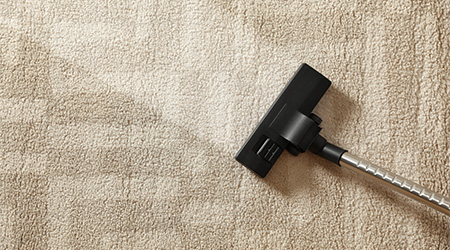
As The Great Resignation continues, the idea that robots might be coming for all of the jobs is a legitimate worry, providing yet another reason for workers to seek employment elsewhere as they feel less valued and redundant.
Companies, though, are embracing the idea that robotics not only increase overall efficiency, they actually enhance the ability of workers to perform a job as opposed to entirely replacing them. One recent vacuum launch from a company that specializes in robotics was produced largely with increased employee efficiency in mind.
"In today’s challenging labor environment, this product will be a key solution to help our customers meet troublesome resource challenges," remarks the vice president of product engineering.
"It has become more important than ever for organizations to create high-functioning and sustainable operations, and an increasing number are achieving that through combining the best of automation with human workforces," says the CEO.
This is partly why the robotics market is booming — and experts predict that these devices, known as collaborative robots (cobots), may offer the rosiest outlook of them all. The cobot — a robotic device that doesn’t fully replace human worker involvement, but instead offers capabilities that allow them to free up their attention in order to tackle other tasks — can add to the company bottom line and allow individuals to work smarter and faster.
A user-operated cobotic vacuum, for instance, might be able to generate a report that includes how much dirt was picked up, when various areas were cleaned, and confirmation of full coverage. An analysis of the onboard filter can provide immediate feedback as to how efficiently a device is functioning, limiting unnecessary replacements and maintenance breaks.
For end users in particular, the field of robotics offers an exciting opportunity to enhance not just productivity, but guaranteed quality-of-service. Vacuums capable of "memorizing" hundreds of automated routes can be programmed to operate in all sorts of facilities, as opposed to small, residential vacuums that require quite a bit of time to program and explore the home environment before it’s able to safely navigate the surroundings and avoid potential obstacles and safety hazards.
"They can do two things that traditional janitorial services do not," says Thomas Holland, CEO of Apex Property Services in Dallas — a company that’s worked to increase confidence in the implementation of robotic vacuums with facility managers – speaking in a recent interview. "It’s something that every facility manager is trying to do — create a complete record of all the work that’s done. Use of robotic vacuums alone can save 60 to 70 percent on the cost of vacuuming in a commercial building."
Adding smaller, automated devices to the workforce creates a unique situation in which cleaning can occur almost entirely in the background — enhancing the facility environment without the intrusiveness of a big machine.
Looking even further into the future, some companies are looking to incorporate cleaning processes into existing office management tools —such as scheduled cleaning in Outlook. A German company is working on a smart office concept that operates entirely on scheduled cleaning periods stored in a shared calendar.
By using a robotic vacuum cleaner that’s always available, there’s no need to wait for scheduled cleaning services to occur. For example, if the Board is popping in for a surprise visit tomorrow, the vacuum can be called out on demand.
These devices can even learn which areas of the office require special attention. Perhaps employees sitting farther from the entrance tend to track outside dirt and debris in at higher rates than the rest of the office, or a certain coworker that eats lunch at his desk drops a few more crumbs than other employees. Intelligent devices can eventually learn and adapt to these cleaning needs, venturing out to clean particular areas with increased frequency.
As robotics continue to grow in both popularity and familiarity, it’s critical for facility managers to balance the need for efficiency and quality with a satisfied and empowered workforce. Robotics aren’t a replacement for the people and resources that have historically gotten the job done — they’re an innovative tool that can provide value, make work easier, and help bring facilities into the future.
Jackson Silvanik is the Managing Editor for Facility Cleaning Decisions, and lives and works in Lexington, Kentucky. He joined Trade Press Media Group in 2021 and also edits and writes for Contracting Profits, Sanitary Maintenance and Cleanlink.com.
Smart Vacuums Help Balance Quality-of-Service With Efficiency

 Celebrating BSCAI's 60th Anniversary eBook
Celebrating BSCAI's 60th Anniversary eBook The Down and Dirty on Cleaning in Virus Season
The Down and Dirty on Cleaning in Virus Season How Surfactant Use is Expanding in Commercial Cleaning
How Surfactant Use is Expanding in Commercial Cleaning